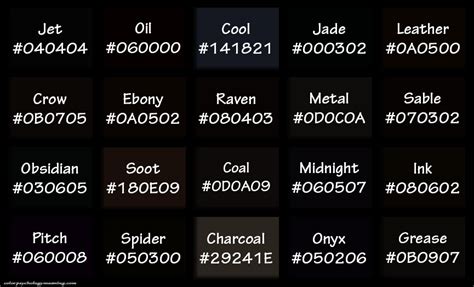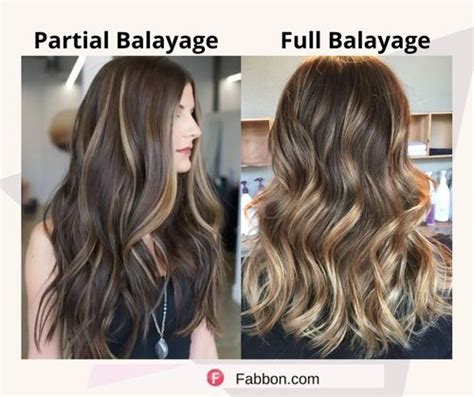Introduction:

Balayage, a beloved hair coloring technique, has taken the beauty industry by storm. With its natural-looking, sun-kissed effect, it’s no wonder why women worldwide have embraced this transformative method. However, the decision between partial and full balayage can be a daunting one. This comprehensive guide will delve into the nuances of both techniques, helping you make an informed choice to achieve your desired hair goals.
Partial Balayage: The Subtle Approach
Partial balayage involves highlighting only specific sections of your hair, typically around the face and crown. This technique creates a subtle, frame-enhancing effect that complements your natural color.
Benefits of Partial Balayage:
- Maintains Natural Dimension: Partial balayage preserves the majority of your natural hair color, resulting in a harmonious blend of light and dark shades.
- Low Maintenance: As only a portion of your hair is highlighted, partial balayage requires less frequent touch-ups, saving you time and money.
- Suitable for All Hair Types: Partial balayage flatters a wide range of hair textures and lengths, from fine to coarse and short to long.
Full Balayage: The Bold Statement
Full balayage, on the other hand, involves highlighting all of your hair, creating a more dramatic and transformative look. This technique is ideal for those seeking a bolder, sun-kissed effect that’s reminiscent of natural highlights.
Benefits of Full Balayage:
- High Impact Effect: Full balayage creates a more pronounced color change, adding depth and dimension to your hair.
- Versatile Options: You can customize your full balayage to suit your preferences, from subtle to vibrant hues.
- Masks Color Imperfections: Balayage techniques can camouflage gray hairs or correct uneven color distribution, resulting in a more polished appearance.
Comparing Pain Points
Partial Balayage:
- Less time-consuming compared to full balayage.
- Lower cost than full balayage.
- May require more frequent touch-ups.
Full Balayage:
- Takes longer to complete compared to partial balayage.
- Higher cost than partial balayage.
- Requires less frequent touch-ups.
Motivations for Choosing Partial or Full Balayage
Partial Balayage:
- Enhance natural hair color without drastic changes.
- Frame the face and add depth around the crown.
- Low maintenance and budget-friendly.
Full Balayage:
- Create a bold, sun-kissed transformation.
- Mask color imperfections and add dimension.
- Make a statement with a high-impact hair look.
Common Mistakes to Avoid
- Over-bleaching: Ensure your stylist uses professional products and techniques to prevent damage from excessive bleaching.
- Applying heat too frequently: Excessive heat styling can weaken bleached hair, leading to breakage and dryness.
- Skipping deep conditioning treatments: Regularly conditioning bleached hair is crucial to maintain its health and shine.
Pros and Cons of Partial vs Full Balayage
| Feature | Partial Balayage | Full Balayage |
|---|---|---|
| Time Consumption | Less | More |
| Cost | Lower | Higher |
| Maintenance | Frequent | Infrequent |
| Hair Impact | Subtle | Dramatic |
| Versatility | Limited | Extensive |
Table 1: Comparison of Partial and Full Balayage
Applications of Balayage: A Versatile Technique
In addition to enhancing your hair color, balayage can be applied to create a variety of stunning effects:
- Ombré Balayage: Gradual transition from dark roots to lighter ends, creating a seamless blend.
- Babylights: Ultra-fine highlights that mimic the natural sun-lightened hues of childhood hair.
- Foilayage: A hybrid technique that combines balayage with foils to create more defined highlights.
Table 2: Applications of Balayage
| Application | Description |
|---|---|
| Ombré Balayage | Gradual transition from dark roots to lighter ends |
| Babylights | Ultra-fine highlights mimicking natural sun-lightened hair |
| Foilayage | Hybrid technique combining balayage with foils for defined highlights |
Maintaining Your Balayage: A Guide to Healthy, Radiant Locks
- Use sulfate-free shampoos: Harsh sulfates can strip hair of its natural oils, making bleached hair more susceptible to damage.
- Deep condition regularly: Nourishing hair masks help strengthen and repair bleached hair, keeping it healthy and shiny.
- Minimize heat styling: Heat can dry out and damage highlighted hair, so limit its use and always apply heat protectant spray before styling.
Table 3: Balayage Hair Care Recommendations
| Recommendation | Benefits |
|---|---|
| Use sulfate-free shampoos | Preserves natural oils and protects bleached hair |
| Deep condition regularly | Strengthens and repairs bleached hair |
| Minimize heat styling | Prevents dryness and damage |
Finding the Right Stylist: Key Considerations
- Experience and Expertise: Choose a stylist with proven experience in balayage techniques.
- Consultation and Communication: Discuss your hair goals and expectations thoroughly to ensure a perfect match.
- Product Quality: Make sure your stylist uses high-quality products that prioritize hair health.
Table 4: Stylist Selection Criteria
| Criteria | Importance |
|---|---|
| Experience and Expertise | Ensures professional execution |
| Consultation and Communication | Aligns expectations for optimal results |
| Product Quality | Protects hair health and longevity of treatment |
Conclusion
Whether you opt for partial or full balayage, embracing this transformative technique can enhance your hair’s beauty and boost your confidence. Understanding the nuances of each technique and considering your motivations will empower you to make an informed choice that aligns with your hair goals. With the right care and maintenance, your balayage will radiate health and vibrancy, turning heads wherever you go.
